Today’s trip down the memory lane of National Hockey League summer meetings takes a look at a blockbuster trade that moved two goaltenders who would eventually end up in the Hockey Hall of Fame.
A deal that shook the NHL
The barter took place on June 4, 1963 and rocked the hockey world to its core. The Montreal Canadiens, for three years unable to win a Stanley Cup since claiming their fifth consecutive championship in 1960, decided it was time to shake up the roster. They did so in a major way. Their trading partner was the New York Rangers, a perennial bottom-feeding team intent on moving up the NHL ladder.
The Canadiens packaged goaltender Jacques Plante and forwards Don Marshall and Phil Goyette, all veterans, to the Rangers. In exchange, New York sent goalie Lorne (Gump) Worsley, and forwards Dave Balon, Leon Rochefort and Len Ronson to Montreal. Both Plante and Worsley would be elected to the Hockey Hall of Fame after they hung up their skates.
Selke: Changes were needed
Montreal’s managing director Frank Selke said that three years without a Stanley Cup (considered an eternity in Montreal) necessitated changes to the Habs’ roster. The move would signify a new emphasis on youthful, tougher players.
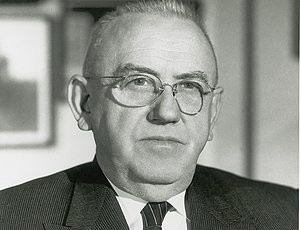
Selke: “We hate to have such fellows go and I wouldn’t want to say an unkind word about any of them. But the players we acquired give us a total of 11 years in youth. The wingers are a little more muscular, which is what we need.”
Selke went on to say that Plante would be a big hit in New York. He felt that the six-time Vezina Trophy winner’s recent problems in Montreal “were mental rather than physical” and that a change of scenery would revive his career.
Habs coach not sold on trade
Canadiens coach Toe Blake didn’t seem very happy with the trade. His feuds with Plante over the years are well-documented, especially that fateful night in November, 1959 when the goaltender refused to return to a game in New York unless he was permitted to wear a mask of his own design. Blake relented on that occasion but was often quoted as questioning Plante’s character.
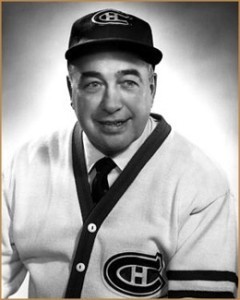
Blake, however was reported to be unhappy with the inclusion of Marshall in deal. He refused comment, only saying, “Talk to Reardon and Pollock, they made the trade.”
Within a year, Pollock would succeed Selke as Montreal’s managing director.
So, how did this trade affect the fortunes of the two teams and the players involved? Despite the big names involved, the results were mixed.
Worsley got off to a slow start
Montreal was rebuilding and at first blush, it didn’t appear that they would miss the players they sent to New York. The problem was, except for Worsley, who wasn’t initially anywhere near the puckstopper Plante had been, none of the skaters coming to Montreal particularly distinguished themselves with their play.
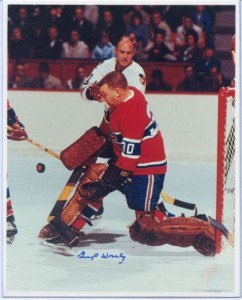
Worsley spent most of his first two seasons employed by Canadiens with Quebec of the AHL. He started his first campaign with Canadiens slowly and was replaced by Charlie Hodge in each of those years.
Luckily for the Gumper, Hodge was injured late in the 1964-65 season and Worsley took over in the playoffs. He backstopped Montreal to the 1965 Stanley Cup, the first of four he would win with the Habs. He still holds the NHL record for best undefeated record in the playoffs with 11 wins in 1968.
He also shared the Vezina Trophy twice with Montreal – in 1966 with Charlie Hodge and 1968 with Rogie Vachon.
Balon, Rochefort, Ronson were never stars
Balon, Rochefort and Ronson never achieved great notoriety with Canadiens.
Balon scored 24 goals in his first year in Montreal, but steadily declined during the next three seasons. He was the first skater selected in the 1967 expansion draft, taken by Minnesota North Stars. He returned to the Rangers in a trade a year later, where he enjoyed his greatest success.
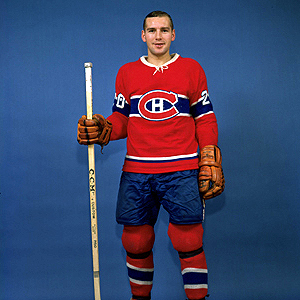
Rochefort also left Montreal in the 1967 expansion draft after playing 68 games for Canadiens over three seasons. He was selected by Philadelphia, and had his best NHL year in 1967-68 with 21 goals for the Flyers.
Ronson, who once scored 62 goals in 68 games for Fort Wayne of the International Hockey League, never played for Montreal.
Plante never fit in with Rangers
Plante never seemed comfortable with the Rangers. His goals-against average ballooned to 3.38 in his first year there. The following season, he seemed to revert to his Montreal habit of complaining about various health issues and he subsequently announced his retirement at the end of the 1964-65 season. While most people at the time felt the announcement was simply a ploy to get himself moved out of New York, Plante sat out the next three seasons.
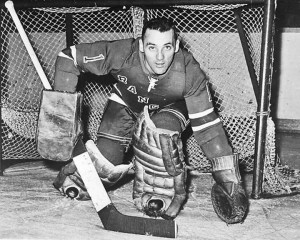
In the summer of 1968, the St. Louis Blues got word of Plante’s desire to return to the NHL and drafted him from the Rangers’ list. Not only did he report to the Blues, he teamed with another future Hall of Fame goalie in Glenn Hall to resurrect his career. The two provided the Blues with outstanding goalkeeping and shared the Vezina Trophy in 1969.
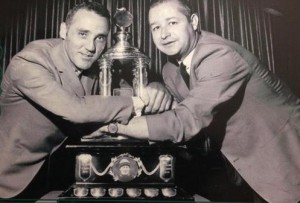
Ironically, Plante and Hall were nearly traded for each other just weeks before the Canadiens – Rangers swap. Montreal had made an even-up offer to Chicago of Plante for Hall, but the Blackhawks couldn’t be convinced that the deal would be in their best interests and declined.
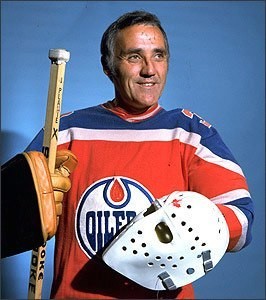
Plante made stops in Toronto and Boston and eventually hung up his gear after a short stint with the Edmonton Oilers of the WHA in 1974-75.
The other two Canadiens who went to New York enjoyed a fair amount of success with the Rangers.
Marshall, Goyette key players for NY
Marshall enjoyed seven productive seasons with New York. He was an all-purpose forward, spending most of his time on left wing, but also able to fill in seamlessly at centre. He was a principle penalty-killer as well. He scored 20 goals four times, reaching a career high of 26 during the 1965-66 season.
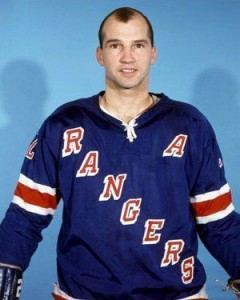
He went to Buffalo during the expansion draft of 1970 and scored 20 times in his only season in the Queen City. Toronto picked him up in the intra-league draft in 1971 and he spent his final season with the Leafs.
Goyette, often called “The Thin Man” because of his slight build, benefitted greatly from the increased ice time he enjoyed with the Rangers. He became a mainstay, usually playing on the first or second line.
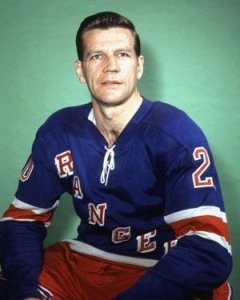
After six solid years in New York, the Rangers sent Goyette to the St. Louis Blues on June 10, 1969 for the Blues first-round pick in that summer’s Amateur Draft. The Rangers took Andre (Moose) Dupont with the pick.
Goyette enjoyed his finest season with the Blues, scoring 29 goals and adding 49 assists. He was named the winner of the Lady Byng Trophy.
After that one season with the Blues, Goyette rejoined his former team-mate Marshall with the Buffalo Sabres, also by way of the expansion draft. After a season and a half with the Sabres, he was sold back to the Rangers, where he finished the 1971-72 season, his last in the NHL as a player. In June of that year, he was named the first coach of the expansion New York Islanders.
Trade helped both teams
Despite the relative lack of success by the skaters obtained by Montreal in this deal, Worsley gave Canadiens great playoff goaltending as he helped them to four Stanley Cups during his tenure. On that basis alone the deal had to be considered a good move to the Habs.
The Rangers missed the playoffs in the first three years after the trade, but not because of the efforts of Goyette and Marshall. Plante was a huge disappointment, and was succeeded by Ed Giacomin in the 1965-66 season. The Blueshirts made the playoffs in the 1966-67 season, and for the next two years after that. The deal proved worthwhile for the Rangers once they solved their goaltending issues with the arrival of Giacomin.
So, with the benefit of hindsight, this trade turned out to be the best kind of deal – one that actually help[ed both sides.
Next time around, we examine a deal that changed the balance of power in the NHL – drastically improving the fortunes of one club in particular.